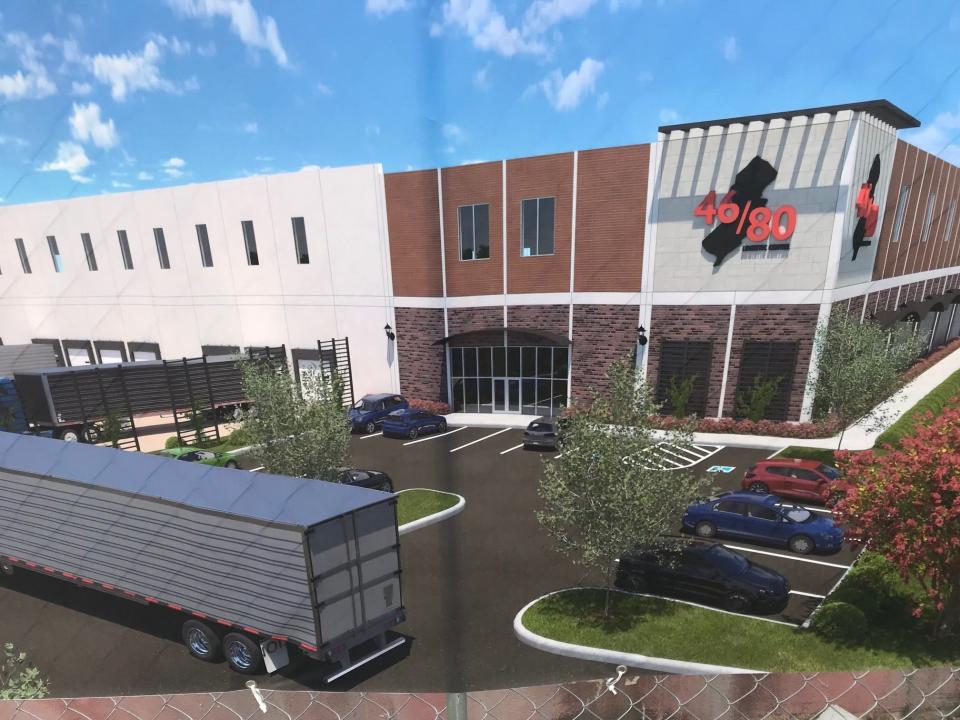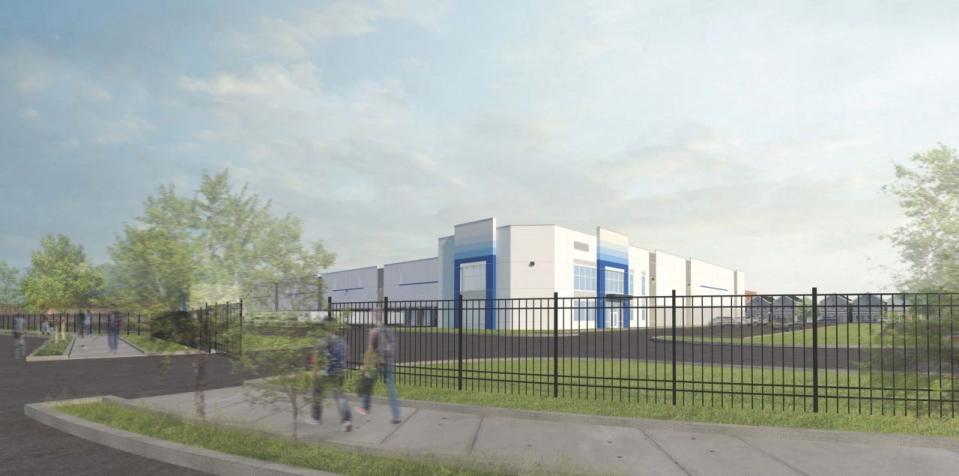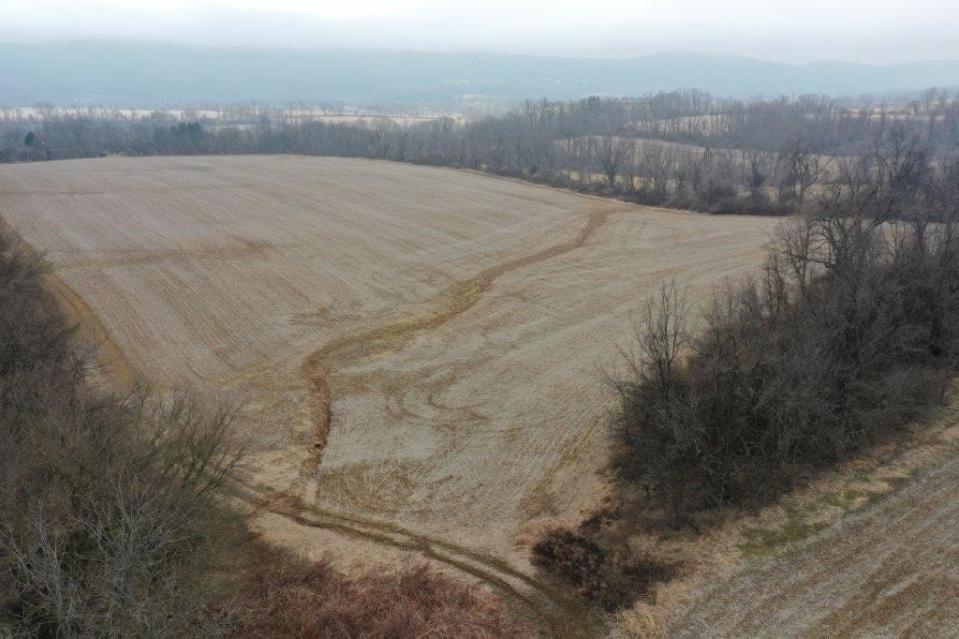As warehouses proliferate across NJ, concerns rise over health impact for nearby residents
In the wake of the COVID-19 pandemic, which shuttered brick-and-mortar stores and drove more people to shop online, developers have proposed and constructed more distribution warehouses throughout New Jersey — and advocates have raised growing concern about the environmental and health implications for the millions of residents who live in proximity to these buildings.
There's the growth in packaging. There's the increased traffic. There's lost habitat. And there's the freight truck emissions that spew harmful particulates and gases into the air, sometimes very close to neighborhoods already overburdened with environmental and health problems.
New Jersey’s 1,777 warehouses lie within a half-mile from about 1.9 million residents throughout the state, according to a recent report by the Environmental Defense Fund. The report analyzed New Jersey and nine other states where warehouse development increased rapidly in recent years.
Many New Jersey warehouse neighbors live in municipalities considered “overburdened communities” by the state Department of Environmental Protection. They have significant numbers of minority residents and those living below the federal poverty line.
Overburdened communities meet at least one demographic trait defined within the state's Environmental Justice Law: At least 35% are low-income households, at least 40% are residents who identify as minorities or members of a state-recognized tribal community, or at least 40% of households possess limited English knowledge.
For instance, the Ironbound neighborhood in Newark is multi-ethnic and predominantly composed of working-class residents. The Ironbound Community Corporation's website notes that warehouses, factories and industrial properties stand next to multi-family homes and public housing complexes in the neighborhood.
"Overburdened communities" or "environmental justice communities" are disproportionately affected by air pollution, toxic waste and "anything that is detrimental for the environment and their health," said Tolani Taylor, who works to slow warehouse development in New Jersey with Clean Water Action.

Hazards Next Door: What's lurking next door? Investigation reveals chemical hazards near North Jersey homes
People from those communities "are being impacted the most from the toxic air pollution that’s coming from those diesel trucks that are often moving from the ports that we have in New Jersey … to the warehouse facilities and throughout various neighborhoods before finally reaching their last destination,” Taylor said.
Exhaust from diesel trucks contains components that pose health risks for exposed populations, some that can affect people even after short-term exposure. Nitrogen oxides and particulates can exacerbate underlying respiratory issues such as asthma or bronchitis.
Solutions to protect warehouses' neighbors
Taylor focuses largely on stopping “problematic” warehouse proposals and advocating for stronger statewide legislation to control the proliferation of warehouses and truck emissions.
Gov. Phil Murphy signed the Environmental Justice Law in September 2020. It aims to prevent land use that could negatively affect health and well-being. It created a process to assess the environmental and health stressors caused by certain facilities on overburdened communities. It also allows the DEP to deny or add conditions to permits for facilities that would otherwise bring disproportionate stressors to a community.
More: Warehouses, distribution centers popping up all over North Jersey. Here's where and why
Warehouses are not included in the list of applicable facilities, however, because the buildings themselves do not produce pollution, according to the State Planning Commission's Warehouse Siting Guidance. But warehouse operations increase truck traffic in overburdened communities.

"There is no denying that warehouse operations serve to increase truck traffic volume," the guidance document reads. "This increased traffic volume increases mobile sources of air pollution and greenhouse gas emissions when they are located near communities already disproportionately impacted by environmental harms and risks."
Amazon greatly expanded its warehouse space as the pandemic increased online purchasing. Jeff Bezos, Amazon's founder, pledged three years ago to establish the Bezos Earth Fund, which the fund's website says is "the largest philanthropic commitment ever to fight climate change and protect nature." The $10 billion grant commitment will be disbursed by 2030.
And the company told Reuters in 2021 that it had ordered hundreds of trucks that run on compressed natural gas, to shift its vehicle fleet away from more heavily polluting trucks.
Pushing zero-emission trucks
Beyond warehouse spread, the environmental advocates promote zero-emission standards and the electrification of truck fleets as a way to address public health concerns about warehouses and transport trucks.
The DEP also adopted the Advanced Clean Trucks rule in December 2021. This requires truck manufacturers to sell zero-emission, pollution-free trucks in New Jersey starting in 2025. If electric truck sales increase 5% annually, as the rule demands, 75% of all buses and trucks sold in 2035 will be environmentally friendly.
NJ Transit, meanwhile, was recently awarded a $47 million federal grant to modernize a key bus garage to handle zero-emission electric buses in the future. The agency is planning a second electric bus pilot program for 2026. The first pilot, taking place in Camden, began last year.
In January 2020, Murphy laid out clean energy goals for NJ Transit's bus program, requiring 10% of buses purchased by December 2024 to be zero-emission, 50% by December 2026 and 100% by December 2032.
The growth of warehouses and the worrisome impacts that come with them are primarily local government issues, Taylor said. Municipal governments ultimately decide whether proposed developments move forward in their communities due to the state’s Municipal Land Use Law. The Warehouse Siting Guidance suggests that municipalities consider changing zoning rules in overburdened communities to prohibit the construction of new distribution warehouse facilities.

Many concerns could be addressed through proactive, regional planning, said Stacey Fox, a co-founder of the Green Garden State Alliance. Warehouses and their operations also affect pollution levels and the health of residents in the municipalities surrounding the towns where they are located, as well as road maintenance, emergency services and other issues.
The municipality that approves a warehouse development "gets all the tax revenues, but the town that abuts it has to absorb infrastructure costs … and that town may not have the resources for that,” Fox said.
Light and noise pollution, lost habitat
Beyond health issues, advocates expressed concern about warehouses causing light and noise pollution, loss of natural habitats and increased traffic, particularly caused by warehouses in undeveloped areas. Open spaces in rural and suburban areas attract warehouse developers such as Bridge Development Partners, whose 5.5 million-square-foot warehouse proposal in Mercer County attracted community scrutiny.
In June of last year, dozens of residents opposed the Bridge Point 8 development proposal in West Windsor, citing concerns about more vehicles clogging local streets and the threat to 64 acres of wetlands. The developer's application to build the seven-warehouse complex has not moved forward.
Legislation that limits warehouse development is just one solution, Taylor said. The New Jersey State Planning Commission issued guidelines on warehousing and goods movement last September, but Taylor, Fox and their Green Garden State Alliance partners want to see those suggestions mandated.
Fox encourages people concerned about climate change, environmental issues and warehouse spread to run for local offices, thus gaining power to stall development projects. She’s running for a seat on the West Windsor Township Council with the fight to stop Bridge Point 8 as her focus — she and her running mates want it "to be a hometown, not an industrial zone.”
This article originally appeared on NorthJersey.com: NJ warehouses spread causes alarm over possible health impact

